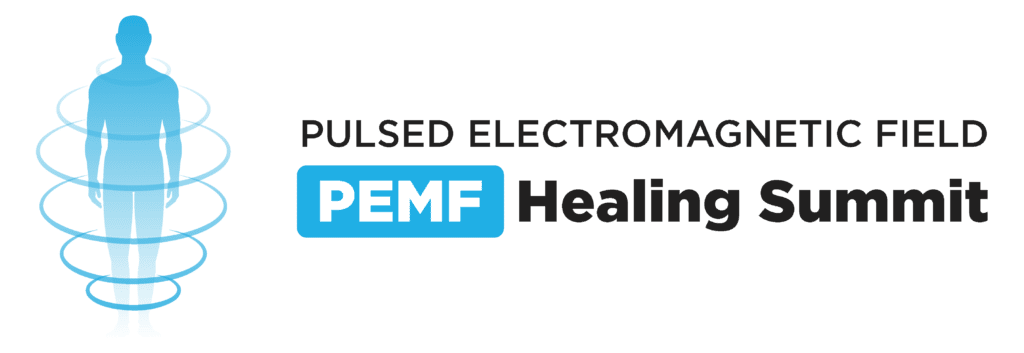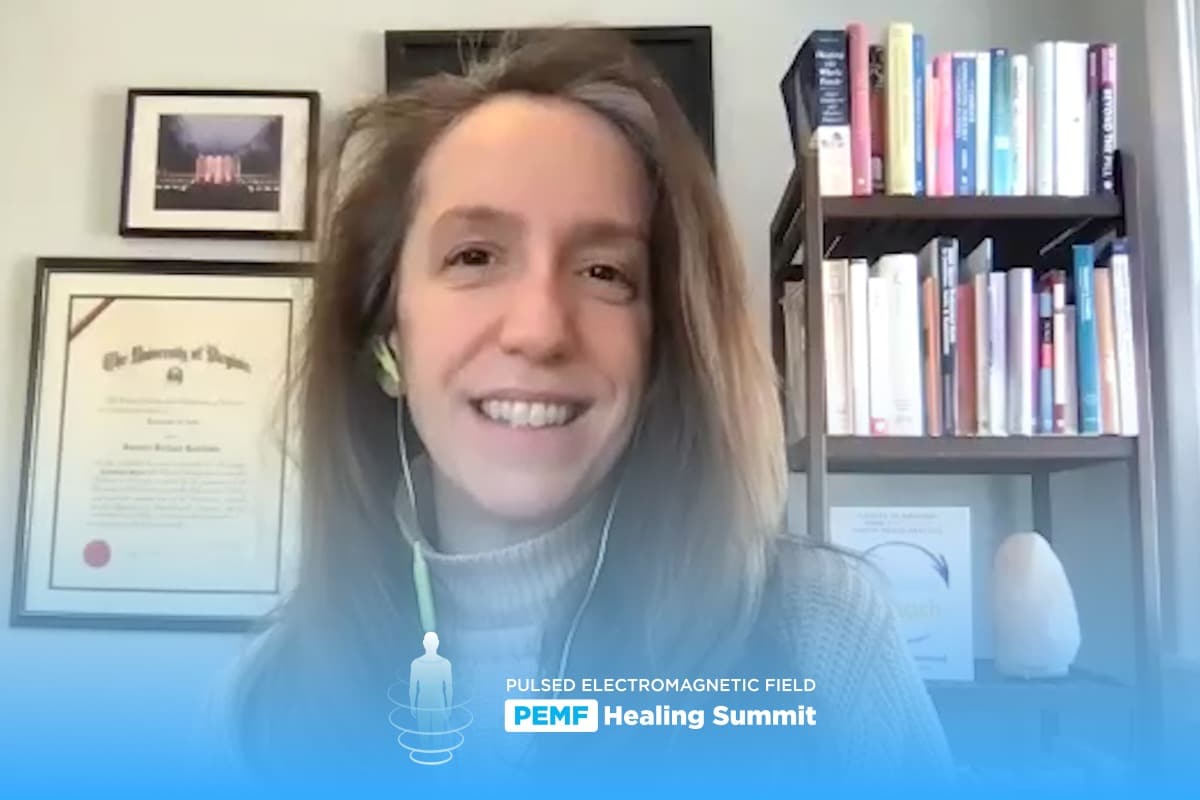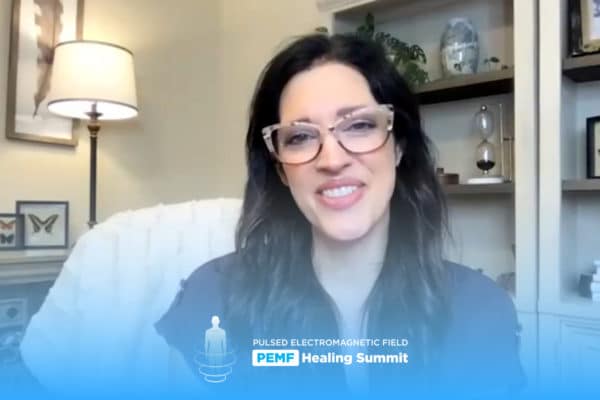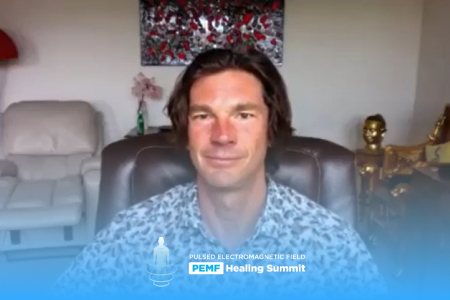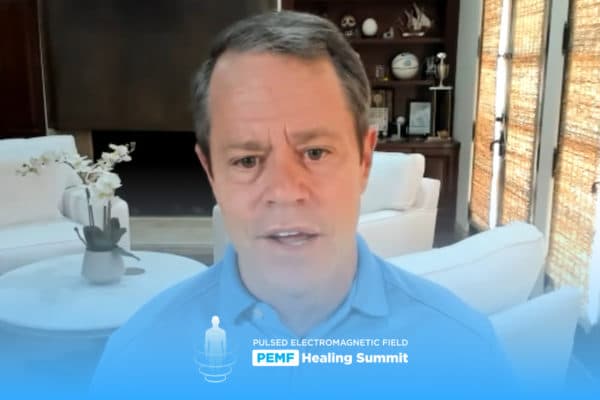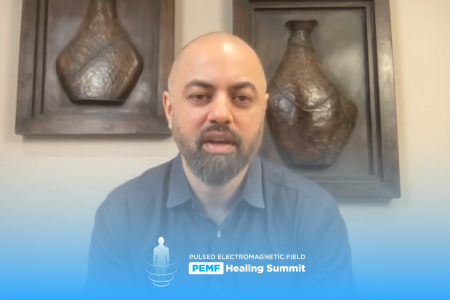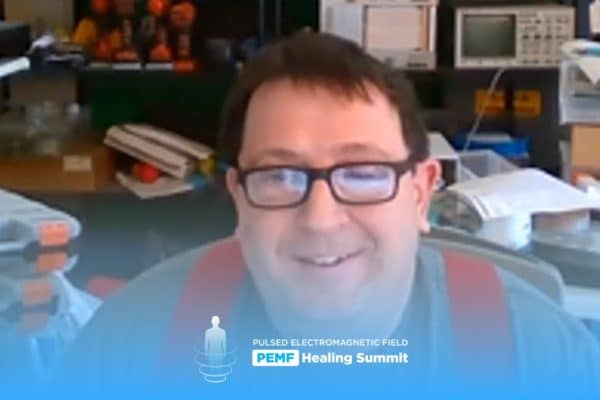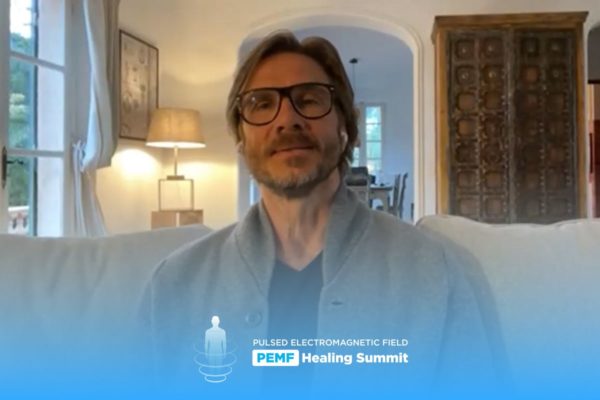Join the discussion below

Dr. Marlene Mahipat started from humble beginnings in Trinidad and moved to the United States in 1990 with $300 and two suitcases containing her entire life. Overcoming many obstacles, which included working three jobs and going to school full time, she persevered and completed her education to earn a Doctor... Read More

Jessica Drummond, DCN, CNS, PT, NBC-HWC
Dr. Jessica Drummond is the CEO of The Integrative Women’s Health Institute and author of Outsmart Endometriosis. She holds licenses in physical therapy and clinical nutrition and is a board certified health coach. She has 20 years of experience working with women with chronic pelvic pain, facilitates educational programs for... Read More
- Covid long haul syndrome (CLHS) has many of the features of MECFS, fibromyalgia, autoimmune conditions, EBV reactivation, asthma, allergies, and menopause. There are also significant metabolic risk factors in that people with pre-existing metabolic disease, such as diabetes are at higher risk of developing CLHS. Therefore, treatment of CLHS needs to be multifactorial and layered. While exercise and activity are important in general, they can be aggravating in CLHS and therefore that needs to be gently controlled. The symptoms of CLHS include crushing fatigue, headaches, aches and pains, organ damage, cardiac inflammation, clotting, insomnia, depression, dysautonomia (POTS), sleep apnea and possibly hot flashes. Drpawluk.com has a blog about Long hauler syndrome. PEMFs can help with many of the components described for long haul syndrome. The root causes of CLHS can include micro clotting, aging monocytes/white blood cells, capillary gas exchange issues, vagal nerve imbalance, loan the trick oxide levels, residual viral reservoir activation and autoimmune reactions. Treatment approaches include supplements, nutrition, IV therapies, CPAP is needed, parasympathetic activation, PEMF therapy – all in a layered approach. Endometriosis is also a complex condition with many layers. Comparable multimodality approaches are needed to adequately deal with the condition. PEMF therapies can address many of these components as well, especially pain, inflammation, pelvic pain and bowel and bladder function.
Marlene Mahipat, DC
Good morning, good morning. Dr. Drummond, how are you?
Jessica Drummond, DCN, CNS, PT
I’m good, so happy to be here.
Marlene Mahipat, DC
Oh my God, thank you so much. I am so stoked to do this interview today. You are such an interesting person and this is great. This is great. So I am gonna let you introduce yourself.
Jessica Drummond, DCN, CNS, PT
All right, excellent. Well, thanks so much for having me first of all, it’s my pleasure to be here. And I’m coming with a background of 20 plus years of experience as a clinician. My original training is in physical therapy. I’m a licensed physical therapist. I also have a doctorate in clinical nutrition, and I also work as a nutritionist and most importantly, I’m a board certified health coach. So that gives me a really interesting perspective on helping people elicit all kinds of healing strategies from within them that they already possess. I’ve run a company called the Integrative Women’s Health Institute for the last 15 years or so. And we have trained integrative practitioners primarily in women’s health and functional nutrition for the last 15 years, all over the globe. Both digitally and in person when we used to do that and may do it again someday. And today I’m coming to you with that background of functional and clinical nutrition experience, physical rehab experience, and my own experience with having COVID and lung COVID for about the last 13 months. And I think finally, we are starting to have enough research to piece together, a sort of model of what may be happening at the root cause level that we can talk about today.
Marlene Mahipat, DC
Oh, that is absolutely so interesting from your background and how you sort of transition into now talking about COVID from personal experience. And I feel that a lot of times we become so much more passionate when we’ve experienced something. And I’m really, really, really interested in finding out other than you having COVID and having this long-haulers syndrome. Tell me a little bit more about how you integrated this into women’s health profession.
Jessica Drummond, DCN, CNS, PT
Well, one of the things I noticed fairly early on was this, was impacting women more so than men. Although there are certainly tens of millions at this point, if not hundreds of millions of men in the world who also have long COVID. The estimation is about anywhere from 10%, but probably more likely between 30 and 50% of people with any COVID infection. In fact, more likely if the person has had a mild or asymptomatic infection will go on to develop long-haulers syndrome or long COVID. But, as is very common with other autoimmune conditions, chronic pain conditions, my background clinically is, you know, 20 plus years of supporting and treating women with chronic pelvic pain and endometriosis. So I’m very steeped in the literature of chronic pain and chronic fatigue, which often overlap and long COVID is also very similar to ME/CFS which is a chronic fatigue syndrome. And so I was seeing that the people presenting with long COVID were more so than not women, generally ages 35 to 55, kind of that middle-aged timeframe. And perimenopausal or transitioning into menopause or the infection itself significantly impact their menstrual cycles. For me, it literally kind of tipped me right into menopause pretty abruptly. And so I was wondering from the get go, if there was some interaction with auto immunity and or hormonal imbalances. However, personally, how I felt was symptomatically was super clear to me from day one, that this is a vascular condition.
I literally had intense burning pain, like, I could visualize a map, you know, as a physical therapist, we have x-ray vision a little bit, right. Cause you’ve done so many cadaver dissections and memorized so much anatomy, right. And, you know, physicians, chiropractors, nurses, we all have kind of x-ray vision. And I was able to really feel a map of my vessels. And so when you look at all of these things layered on top of each other, my women’s health background and my experience, more importantly, I think in working with chronic conditions served me well to start to think about a model for how to unravel this. And knowing that chronic conditions are very poorly managed in traditional medicine. You know, there is no one drug, one procedure, and very often patients are especially, you know, middle-aged women, quite frankly, are gas lit. You’re just anxious, this is menopause. And I’m very familiar with menopause and perimenopause. I’ve been teaching on that subject for a decade. And so, while I knew there was an interaction, I knew it wasn’t the same thing. And so it was giving me, I think having that background helped me to see that here are some of the factors that are probably contributing to this. And like these other syndromes that I see all the time in my practice, ME/CFS, fibromyalgia, endometriosis, chronic pelvic pain, any kind of chronic fatigue, Epstein-Barr virus, you know, other post viral syndromes. We have to look at this through a very broad lens because it’s not like one thing that we’re gonna develop, you know, a single drug treatment for, if you will.
Marlene Mahipat, DC
Right, right, right, right. Yeah, that is really interesting. And talking about, I think from what I heard premenopausal women might be one of the, I don’t wanna say risk factors, but kind of maybe predisposed. So in your research and your findings, what would you say are some of the risk factors for long COVID?
Jessica Drummond, DCN, CNS, PT
So there are a variety of papers that have just started coming out on this. And there was some patient-led survey research that came out probably like within the last three months. And one of the papers is brand new that just came out in the last week. So the patient-led survey research essentially showed that people who were seeking treatment, who were still struggling with long COVID, you know, a year plus, or at least, you know, eight, nine months post COVID. Primarily female, primarily in the age range. I believe it was 35 to 55 or 60, mostly athletic, previously, very healthy, very driven, very athletic high levels of fitness. Or at least moderate levels of fitness was highly correlated. So the kind of healthier you were going in, the higher you risk, which is really interesting because that’s very different from the picture with acute COVID exacerbation, which tends to be men, metabolic syndrome. You know, people that had more metabolic risk factors are at higher risk for hospitalization and death. But for long haul active women and this makes sense when you think about the ACE-2 receptor is the entry point for COVID infection. And people who are more fit, have higher levels of ACE-2 and ACE-2 enzyme, which is generally beneficial. But then the COVID comes in kind of at their, you know, and shuts down that enzyme, which is a potential cause if you will, of why the symptoms are so varied. So athletic, and then also having had a history of ATP or allergies, you know, which we think of in kind of functional nutrition as a more autoimmune picture. Ectopic picture, you know, people with things like eczema. And then in some of the research that was just recently published, also seeing risk factors for people that have previous infection with Epstein-Barr which is interesting because that’s almost everyone. But for like a certain percentage of the population, the Epstein-Barr virus is then kind of reactivated by the COVID infection. There are clear and clearer autoimmune markers. I noticed actually on the CBC website, just this week, they’ve posted autoimmune markers to be looking at for people with long COVID and women have a different autoimmune picture if you will, than men. So in both cases, COVID can activate auto antibodies, but in men, it activates a wider array of auto antibodies, but not as intensely. With women it’s a smaller number of auto antibodies, but higher. And one thing I think about with this, so these are GCPR what is that? I’m blanking on the term of that. But it’s a coupled receptor that’s similar to the histamine receptor that you see these auto antibodies in the small studies we have. Some of these studies are, you know, only 10 people. We can only generalize it so far for a syndrome that’s affecting, you know, hundreds of millions of people.
Marlene Mahipat, DC
Right.
Jessica Drummond, DCN, CNS, PT
But you are seeing auto antibodies to some of these receptors that align very well with this diverse symptom picture. We’ll talk about symptoms in a minute. So history of autoimmune issues, history of Epstein-Barr virus, asthma history just came out and diabetes history. So there may be some interplay with that. Interestingly, so I’ve had never any metabolic syndrome types of issues, but looking into my genetics, there are some metabolic risk factors. And from a gut microbiome standpoint, my Akkermansia which is important for blood sugar stability was very low. So there may be an interaction between you know, metabolic predisposition, even if someone doesn’t actually express diabetes or any level of metabolic syndrome, that may be an issue. And then as I said, female, middle-aged active and athletic.
Marlene Mahipat, DC
Right, right. That is so interesting because we tell our patients, you know, you gotta move, you gotta exercise. And it is really in my office, I preach diet and exercise, diet and exercise and sleep. And of course now PEMF, which now the studies are showing that maybe sometimes just rest might be better as opposed to the athletes. So, you kind of touched a little bit on symptoms. So tell me what are some of the common symptoms of long COVID?
Jessica Drummond, DCN, CNS, PT
So I do wanna answer that. Let me just quickly say about exercise. I am still very much a proponent of exercise, but I think we have to become a bit more nuanced about helping women and all of our patients see when their level of exercise is exacerbating stress and when it is kind of building resilience. And that’s a complicated conversation that could probably take us a whole other interview. But I don’t wanna demonize exercise cause there’s still huge benefits to exercise by and large. And especially for prevention of acute COVID, of death from COVID, again, just resilience, building muscle is very valuable for long-term longevity and kind of women’s health into the, you know, older years. But, I think we have to start being a bit more nuanced about our recommendations with exercise and look at it in concert with everything else, women of often this kind of middle-age are doing, right. Like what’s their stress level, is it here? And then we’re just piling on exercise. It’s just like even more stressful or, you know, can we do it in a way that’s gonna be more nourishing. And then on that note for people who actually have long COVID, exercise is absolutely not a treatment. If anything, it will make the situation worse. So we do not want to exercise. We do wanna do activity and we do wanna consider pacing and getting people back to movement.
Marlene Mahipat, DC
Right.
Jessica Drummond, DCN, CNS, PT
But progressive exercise. And the way that we would think of from a rehab standpoint, like recovering from an orthopedic injury, or even a stroke is absolutely contraindicated in people with long COVID. It can make things significantly worse.
Marlene Mahipat, DC
That really is an eye opener. Absolutely. So what are the most common symptoms of long COVID that you have found in your research and really personally as well?
Jessica Drummond, DCN, CNS, PT
Well there are hundreds of symptoms of long COVID, which is why it’s such an interesting thing to dig into. What’s the root cause of all of that, right. Most common is fatigue, which is really interesting because there is that, you know, interaction with Epstein-Barr virus. And when I say fatigue, I don’t mean sleepy. I mean like crushing, you can’t get out of bed kind of fatigue. It’s exhausting to breathe fatigue and people are trying to live through it because you know, there are various levels of this fatigue and it’s also neurologic and cognitive fatigue. So, difficulty being on screens for a long time, difficulty holding conversations. And like I said, there’s a spectrum of this. So there are a lot of people who are pretty functional, but they’re not at all where they used to be. And I think that’s important thing to be aware of. So fatigue is the most common, headaches, pain, vascular pain, joint pain, muscular pain. When you look at, you know, sections of skeletal muscle under the microscope of people that have long COVID, they look like they are in heart failure. So the muscle themselves are damaged. Also, there is organ damage. So this doesn’t apply to everyone. And a lot of people, the organs sort of recover, but they still have this issue of hypoxia. And we can talk about what some of the causes of that might be.
So there are people who are presenting with things like pericarditis, myocarditis you know, lung issues, clotting blood clots is a very common manifestation. So pain, fatigue, insomnia, you know, depression, as you can imagine, because people can’t work or live or, you know, cook a meal or take a shower. I mean, I know many, many, many people in the long COVID community who a year, you know, three months, six months, a year, two years later from some of the people who were originally affected in March of 2020. Who were vibrant, athletic 30s, 40 years old, people who are wheelchair bound at this point who are using shower chairs, you know and they’re doing their best. I mean they’re trying to live their lives but it’s very debilitating. So visual changes are sometimes an issue. And then a very common manifestation is some degree of dysautonomia. So again, for different people, this presents differently, but many people do have clear diagnosable tilt table POTS, postural orthostatic hypotension. Other people have, and this is something I had REM sleep apnea. So, you know, something that’s sort of dysautonomic from that. A dysautonomia related to hot flashes. And then a lot of people are sort of functioning. You know, they don’t have clear orthostatic hypotension, but they do have kind of wonky blood pressures, especially at the capillary exchange level where they might be able to do some movement, do some exercise, but they really can’t do a lot in upright. So we have to retrain kind of horizontally in the same way that you would do with someone who has dysautonomia.
Marlene Mahipat, DC
Wow, this has got to be one of the biggest eye openers I think with COVID being so new and, you know, kind of just hit the whole world by some kind of storm. And to have people like you, who took the time to do the research and the background, and to come up with these little tidbits, I guess. There’s interestingly on drpollock.com. There is an article where he talked about how PEMF can actually help with some of the symptoms with the cell regeneration and insomnia and inflammation and circulation. So for people who are listening to this, that would actually be a really good place to get some add-on on how PEMF is able to be incorporated to help with this kind of healing. What would you say is the root cause of long COVID? I know you touched on a few different factors, but what would you say would be.
Jessica Drummond, DCN, CNS, PT
The answer is we don’t know yet. I have a few ideas of probable root causes based on literature that’s currently been published and just, you know, seeing probably 20 different specialists in this field myself. Absolutely there seems to be some degree of micro clotting or aging monocytes. So if you look at the the work of Dr. Bruce Patterson in his lab, Dr. Resia Pretorius in her lab, they’re different. But in both cases, the kind of underlying theory is that there are these micro clots or essentially aging monocytes that have tried to clean up the proteins of COVID. And got in these, like it’s like sticky and gumming up the works of the vascular system at the capillary gas exchange level and or at the just vessels in general. I think that is true. Now, I also think that may or may not be the root, root in the sense that, you know, we don’t have papers really yet out of those labs, looking at clinical trials of treatment and how long they last in people. Because, you know, we are seeing that sometimes people go and they kind of clean up those clots. Whether it’s through an anticoagulation protocol or through apheresis or through an antiviral protocol, clean up that issue. And I’ve had elevated fibrinogen, which we’ve been steadily treating with more holistic anticoagulation and that’s working well, my fibrinogen is normal now. But that capillary gas exchange problem, why do we have either these clots or these little gumming up, you know, immune particles, if you will. What’s driving that is the question. And it’s probably, and again, I’m not sure about this because it could just be a shift in the immune, like the immune system gets sort of stuck. So I think that’s one theory. The immune system is sort of stuck in an aberrant response.
And this may relate to PEMF. I have not personally used PEMF and I don’t know enough about it to really talk about it here, smartly. But, I would say that vagus nerve toning is essential. So again, and from my experience with chronic pain and chronic fatigue, we do see that even in chronic fatigue syndrome, that there are lower levels of nitric oxide in the blood. If you take the blood of people from ME/CFS, and you, you put it in other people, it changes the level of nitric oxide, which is fascinating. So, looking at how the nerve system can sort of reset if you will. The immune response, I think is really an interesting thing to explore. I think that’s essential also because everyone seems to have some degree of dysautonomia with long COVID. So that’s potential root, root cause number one. Potential root, root cause number two is viral reservoirs. So studies have been done looking at patients up to 230 days post-infection and they still find reservoirs of COVID in the brain, in the gut, in the eye, you know, all over the body. So kind of like Epstein-Barr where it can hide and be reactivated, that’s an issue. And then if both COVID can both hide and reactivate other viruses, then you’ve got this sort of chronic infection situation going on. And then finally the autoimmune component. So, what has been triggered in the immune system, that’s now kind of creating a new, if you will, autoimmune disease or picture or presentation. So I think those three are things to really look at. And I also think though, that cleaning up the micro clotting, you know, healing the immune system from an inflammation standpoint is all really important to kind of peeling off the onion if you will.
Marlene Mahipat, DC
Right. And PEMF actually does a lot of some of the symptoms and long-term chronic aspects. PEMF helps with circulation. It does cellular regeneration because it works on a cellular level. So some of those icky kind of clotting sticky cells description, I think PEMF might be something that could definitely be explored. And I think that just that article on Dr. Pollock’s website kind of almost marries a lot of what you were saying. So that might be something to really take a look at. Because I think just that one little aspect, you would know a lot about PEMF.
Jessica Drummond, DCN, CNS, PT
Great. Absolutely.
Marlene Mahipat, DC
You know enough about the background of COVID and the symptoms and possible causes. And you always seem like scientifically that if you get rid of such things and you can fix such things, then maybe this might be a solution. And PEMF was just a little add-on to kind of get you going to that end point.
Jessica Drummond, DCN, CNS, PT
Yeah, I mean, maybe so. And I think it’s going to take a multifactor approach in most cases. I also think that there’s a huge range of kind of what people are dealing with. You know, this is literally effecting hundreds of millions of people globally. And so each of those has a different, you know, relationship with COVID, trauma, you know, how many people in their family have passed away from COVID. You know, there’s a trauma response, definitely tied into this, people’s underlying conditions, people’s previous condition. You know, how big of a shock was it for them to go from being highly active, to being really disabled so quickly, you know. And so the range of responses is so varied that I think we’re definitely gonna have to take a personalized approach because for some people it will be simpler to unravel and for some people it will be a lot more complex.
Marlene Mahipat, DC
Right. Absolutely. All of the pieces that you have and you have compiled and from your personal experience and patient population, what is your approach to helping people recover from long COVID?
Jessica Drummond, DCN, CNS, PT
So it really is kind of that unpeeling of the onion. So first looking at the nervous system and doing a lot of things like breath work and vagus nerve toning, activation of the parasympathetic through somatic exercises. Vagus nerve stimulation could be helpful. There is a new paper out on that. It may be a little aggressive for some people, but we can to always start with loud singing and breath work and yoga, and, you know, Qigong and Tai chi, and there’s many strategies. Nature walks, intermittent fasting. I mean, I could list a hundred ways to work on the autonomic nervous system. Then inflammation and immune support to both improve barrier function, to reduce auto antibody challenges, lowering of inflammation, of course. Movement, but within that pacing window, so that people are beginning to feel more functional, unwind some of the depression that can be from being so incapacitated. But being mindful of the envelope of kind of safety of activity. Certainly referrals and follow up for any signs of more acute organ damage. This is where I think our conventional medical system does a great job. I mean, I had a clear case of pericarditis. It was treated medically, that completely resolved within three months. So we looked at the nervous system, the immune system, got microbiome there’s more and more in research there as well about the dysregulation of the gut microbiome. And then dealing with detox and co-infections. So how can we help the body to kind of clean up any activated infections or this more chronic presentation of COVID, where it tends to be hiding these viral reservoirs.
Marlene Mahipat, DC
So you talked about the pericarditis. Tell us a little bit about your personal experience with long COVID and some of the things that you’ve tried personally that helped you.
Jessica Drummond, DCN, CNS, PT
So when I first had COVID, I had a mild case you know, I was light cough, one day of fever, a little bit of fatigue. And then one morning I just woke up and literally couldn’t breathe. My heart rate was 150 at rest. It was really intense around day seven or eight. So I was prescribed some steroids which is interesting we know now that, that steroids can reactivate Epstein-Barr. Also, there is some indication of an overlap between COVID and aspergillus or mycotoxins mold toxicity, which is also interesting because I was isolated in the winter. This all happened to me like Christmas of 2020 in my room, cause you know, we’re trying not to spread it, which was great we didn’t. Only two of us in my family got COVID and was running a humidifier just cause I felt better, it felt good. But when I kind of opened that room up after my 14 day isolation, I realized that, that triggered some mold growth in like the shades on a big window in my room. We clean that off, it’s fine. Like we don’t have a mold problem in the house now, but acutely at the same time that I had COVID I was exposed to mold. And there is some data that shows that, that can make the acute COVID cases worse. So I’ve been doing some mold detoxification in my own body and house, just making sure everything is super clean of mold as much as possible. I really more importantly that I’m tolerant of mold as much as possible because I don’t like to scare the nervous system of anything. I think the nervous system should be able to bathe in mold or gluten or whatever it is without fear. But for a while, sometimes we have to take the pressure off and let the nervous system heal. So we did that, so I’ve done that, I’m doing that.
So I took the steroids, I went to the hospital and I was given IV fluids. I did not have any clots thank goodness. My lungs were clear and basically I was sent home to just breathe the best I could, which I kept doing. Didn’t go away, I had a pretty intense chest pain, a lot of deep fatigue. So I was sent to a cardiologist pretty quickly. My Western medical team did a great job there and I was treated for pericarditis with high dose ibuprofen and colchicine. And I actually also used CBD oil, which they recommended it and agreed with to kind of steadily step that down. So in three months my heart was healed from kind of an organ standpoint. But I still struggled with fatigue. I couldn’t walk more than, you know, 500 feet with real effort. I had a lot of vascular pain, a lot of cognitive fatigue, but mostly it was cardiovascular presentation for me, pulmonary. I wake up in the middle of the night with hot flashes and breathlessness and kind of dropped pulse oxes. I mean up until very recently, like I’m talking within a few weeks or so, my pulse ox at night would go into the 80s every night. So, still struggling with that. Not because there was a lung issue per se, but a vascular issue of the lungs.
And so I slowly increased activity, but from a nutrition standpoint did a ton of polyphenols, you know, everything to increase nitric oxide, beats, laughter you know. Resveratrol for the heart, curcumin, like I said, lots and lots of beet powder, blueberries, no grains, no sugar, no alcohol, no caffeine. You know, just bathed myself in vegetables, soups and smoothies and stuff for months and months and months. And a lot of sleep as much as I could. Although a bit broken because of the suffocation at night, I had some sleep studies. I was always sort of borderline for sleep apnea. I was eventually prescribed a CPAP, which as soon as I bought my O2 stats improved at night. So I’ve kind of kept that on the shelf for now. What else was I doing in the early days? Oh, and then in April and May of 2021. So about five months after my acute infection, I had my mRNA vaccines, which immediately improved my heart, immediately like within a week. And got my resting heart rate back to normal at night into the like lower 60s where it had been, you know, in the 70s for a long time. And my heart rate variability began to improved. And then the second vaccine. So obviously there are two, on the second one about for or five days later after that vaccine, all of my vascular pain just disappeared. So it was fascinating, which again, leads some credence to this sort of viral reservoir theory, if you will. And I was still doing a lot of, you know, quercetin and zinc and other nutrients. My vitamin D levels were fantastic pre-COVID.
They dropped significantly during COVID, but have since recovered. And then just keeping up with those sorts of things. I’ve done ivermectin and other antivirals. The ivermectin was of a temporary mild help, which was still nice. I think it’s a helpful thing for again, potentially antiviral reservoirs. I wasn’t able to tolerate some of the antiviral supplements. So, that is maybe helpful. I don’t think of it as a silver bullet, but I do think it does move the ball forward for sure. I think there are lots of antivirals that could fit that and anti-inflammatories because as I said, ibuprofen was really helpful for me. Like the more powerful the anti-inflammatory the better. So I’ve been doing that in a supplemental form, you know, like I said, curcumin, fish oil, SPM mediators, you know, just throwing the kitchen sink at it from that standpoint. So I’ve also more recently in the last few months, worked with a wonderful doctor, Evan Hirsh who was really skilled in co-infections and mycotoxins to open the detox pathways. That was tricky at first it made me worse before it made me better. I had to really slow down the detox. I couldn’t tolerate a lot of that work at first, which you know, so we slowed it way down, got patient. And that’s been, I think, helpful, but that’s a process. You know, I have that history of Epstein-Barr reactivation who knows about the mycotoxins. There may be other co-infections that I wasn’t aware of. So I think unraveling the co-infections is a really important piece, but a little bit challenging to do. You have to do that in collaboration with your practitioners, for sure. All of this you should do in collaboration with nutritionist, physician, people who are really skilled in this. And then more recently I was in a trial of a drug called Inspiritol. Which is essentially an inhaled form of a number of amino acids and N-acetyl-cysteine and glutathione, which of course I’ve been taking buckets of orally and via IV for months.
And now I took it in an inhaled form and unfortunately I was allergic to it because I am allergic to sulfur drugs. But I was able to tolerate it for about a week and it really has helped with the oxygen, you know, saturation improvement. So I think all of of that adds up to lots and I’ve also more recently done a lot of trauma therapy and you know, really diving into the vagus nerve and parasympathetic activation. So I’ve done what I’m telling you here. I think it’s a layered approach led by the nervous system supported with anti-inflammatory, antiviral and gut microbiome balancing. Some people have a lot more gut symptoms than I have. It’s not really something I’ve had, but I have taken Akkermansia and other things to get my gut microbiome really optimized. And same thing when I was doing the detox, you know, things like binders, even chia seeds have been really helpful for getting the gut moving again. Lots of antihistamine supplements and support from that standpoint. I really still can’t quite tolerate drinking alcohol. So that’s all right, I’m willing to give that up. It’s not something I was doing a lot before, so it’s okay. And maybe one day I’ll have a glass of champagne here or there. So it really has been that multi-pronged approach. And I do feel like it’s been really successful, but I also think we have more work to do because there are a lot of “root causes.” And this, you know, takes a concerted effort over a long period of time with skilled support from people like myself in functional nutrition. From physicians both to rule out more severe organ pathology and treat that when necessary and to dig into these more functional medicine types of approaches.
Marlene Mahipat, DC
This was very interesting. And I like the onion peel, the peel the layers, because I think a lot of things in life if we can approach it as layers, as opposed to trying to hit everything head on and you are sort of a good example. Of how, if you break things down, it becomes a lot easier. And you really are sort of a living testimonial of COVID and long COVID and the different aspects of how you can fix I guess, get yourself back to normal to where one day you’re gonna celebrate with a glass of champagne.
Jessica Drummond, DCN, CNS, PT
Absolutely, yes.
Marlene Mahipat, DC
And be normal again. I would say that PEMF, and maybe after this, we can have a conversation because I think having PEMF as part of your daily routine, you would see such a tremendous difference. Because the supplements that you’re taking and all of that stuff that you’re doing PEMF actually makes all of that work so much better. So this might be something I will talk to you offline as a side note. You are such a package and you’re so interesting. And we talked about COVID and long COVID this entire conversation, but when I read your bio, I looked up this book that you wrote “Outsmart Endometriosis.” And as a female practitioner, I’m so interested in a little bit of that. I know it’s sort of off subject, but you are such a package deal. And I really wanna take this opportunity to hear a little bit more about this book and how you came about the book and some of your little pearls of wisdom.
Jessica Drummond, DCN, CNS, PT
Well, I’ve been treating people with endometriosis essentially in my whole career, so roughly 20 plus years. And that’s also been a journey of really learning over time. What are some of the root causes? How can we unwind it? How can we collaborate with really skilled endometriosis excision surgeons and pelvic physical therapists to help, to rewire the nervous system. To optimize parasympathetic activation, to understand what some of the pain triggers are. And we use a lot of heart rate variability in our practice to help with that. We use, you know, short-term therapeutic diets. And a lot of it is very similar to kind of what I just mapped out with long COVID. And I think how I’ve been able to apply this in my own life without knowing anything cause long COVID is so brand new. Especially when I first had COVID, you know, but I was second wave if you will. It was relatively early in the process at the end of 2020. So I feel like with endometriosis and other chronic pelvic pain conditions, first of all, I have mapped out this whole approach in my book, “Outsmart Endometriosis.” Which any of your audience is welcome to get a free copy of at outsmartendo.com. And I’m actually working on the second edition, right now so hopefully that’ll be out in a couple months. But it’s really the same. Think about how the nervous system gets rocked by everything from medical gas lighting to the trauma of having pelvic and period pain that’s ignored by your school nurses. And you’re told to show up for soccer practice anyway. And you know, these are very driven women whose lives get derailed by very significant pain conditions. And then oftentimes they’re given no treatment except for things like birth control or hysterectomy, neither of which is really very effective as a long-term strategy.
One of which hysterectomy doesn’t even treat this at all because by definition, endometriosis is outside of the uterus. Now there is adenomyosis which is in the uterine wall, but same thing, like we can’t just take it out. It doesn’t just fix it. So we really come from an anti-inflammatory approach, from a autoimmune supportive approach. So optimizing gut microbiome, gut barrier function, digestive function, and that is so intricately related with the nervous system. Because if people are afraid of food or they’re rushing through eating. Or, you know, can’t tolerate things because they have SIBO or something to that effect. And often it’s not just because of what they’re eating, it’s because of growths of endometriosis or adhesions or scar tissue limiting gut mortality. Or even histamine elevation or histamine intolerance, if you will, which is just excessive histamine, limiting that nice digestive flow. It could also be from the nervous system. So we really take the same approach of nervous system, immune system, digestive system, and musculoskeletal system, because I carry my little pelvis everywhere. So you’ve got all these muscles of the pelvic floor that if you can imagine someone’s had intense pelvic pain since they were about somewhere between eight and 20.
You know, so with their first period probably, or even before or in that neighborhood. You know, think about it. If a tree fell on your shoulder and you had a big gush here and there was no treatment for, but like, I don’t know, birth control. Then you’d walk around in kind of a bit of tension, like just waiting for the next tree to fall. And so while it’s not a muscular injury per se, this underlying disease process and the pain cycle triggers myofascial and neuromuscular and musculoskeletal problems as well. In the same way as like, you know, if I walked around like this for 10 years, I’d have a lot of headaches and arm pain and shoulder pain. And yeah, you could throw tons of anti-inflammatories, whether it’s supplements or ibuprofen at it. But until you understand where that pain is coming from, how to change, how the brain interprets it. You know, potentially do excision surgery, public excision surgery to remove the nail from the foot if you will. It’s hard to unwind the secondary sequela and you know, just like long COVID while the infection may or may not be gone. So we do wanna still think about like, do we need to get rid of infections, chronic infections? There’s the follow up, there’s how the immune system responds, how much inflammation happens, you know, underlying traumas that are associated with it. And immune changes that are associated with it. We see the same kinds of things in endometriosis.
Marlene Mahipat, DC
That was a much needed conversation. And I think a lot of my patients would actually take advantage of the book. What was the website again?
Jessica Drummond, DCN, CNS, PT
It’s just called outsmartendo.com.
Marlene Mahipat, DC
That’s on endo.com. But thank you so much Dr. Drummond for doing this interview and the enlightenment that came with it. And you are such a miracle yourself with everything that you’ve been through. And having this time that you can reflect and be able to help so many people. So thank you so much and I will chat offline.
Jessica Drummond, DCN, CNS, PT
All right, well, thank you so much for having me. Thanks very much.
Downloads
